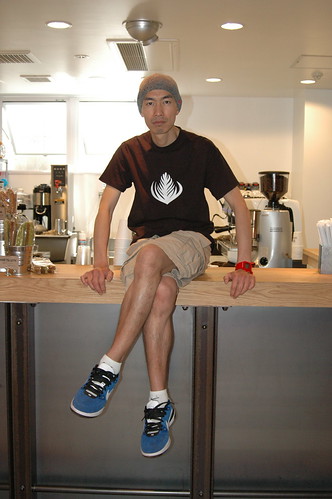Oh, to be the mother of the rough third-grade boys who frightened poor Princess Aiko! (See below). I've heard that we have a few Japanese VIPs at our school; apparently they like the anonymity, as most expats, myself included, are oblivious to their fame and status.
Anyway, I just thought this was an interesting article, which I read in today's IHT (it appeared in the NYTs yesterday).
May 27, 2010
Imperial Adjustments
By KUMIKO MAKIHARA
TOKYO — The drizzly weather didn’t dampen the excitement at the annual spring imperial party last month as the royal family strolled along Tokyo’s Akasaka Palace grounds. Mao Asada, the Olympic figure skating silver medalist, was so overwhelmed when Emperor Akihito spoke to her that she managed only to repeatedly reply “yes,” and “thank you very much.”
It was a typical reaction that shows the magnetic hold the emperor and empress have over the Japanese people.
Missing as usual from the festivities was Crown Princess Masako who suffers from a stress-related disorder that causes anxiety and distress and only occasionally attends official functions. On that day, however, she was caught up in another issue compounding her personal difficulties. Princess Masako was with her eight-year-old daughter at school, encouraging the young princess who is struggling to overcome absenteeism.
Princess Aiko, who is in the third grade at an exclusive, private school traditionally associated with the imperial family, became reluctant to attend class in early March after she was frightened by the rough behavior of some boys, according to palace officials. Since then, in a worrisome situation of the vulnerable leading the fragile, Princess Masako began accompanying her daughter to school every day, with the two of them returning home after just a few hours there.
As a woman from the same generation, I have sympathy and empathy for the 46-year-old crown princess. The Harvard-educated career diplomat lost her independence when she married Crown Prince Naruhito in 1993. She then spent years trying to bear a male heir. Eight years into the marriage, she produced Princess Aiko, who as a female cannot ascend the throne.
All the while, Princess Masako has been under intense public scrutiny as to whether she meets the standards of the tradition-bound imperial family. The Japanese royals don’t have any real political power, the post-World War II Constitution having stripped the emperor of his controversial wartime leadership. Today, the job of imperial family members is to attend official functions, which they do nearly every day, and to partake in religious rituals inside the palace.
These days the Japanese are increasingly questioning whether, when the time comes, Crown Prince Naruhito will be able to carry out the duties of the throne — ceremonial as they are — with the continued absence of his wife.
It’s hard to know much detail of goings-on inside the moat that surrounds the downtown Tokyo imperial grounds. Palace officials restrict their weekly briefings to a select group of journalists from the mainstream Japanese media who in turn tend to acquiesce to imperial requests on what not to write. After officials announced the bare bones of Princess Aiko’s problems, they asked the captive press to refrain from reporting on the school.
Palace doctors did provide an update on Princess Masako’s condition in early February, saying they had been treating her for more than five years for “adjustment disorder with mixed anxiety and depressed mood.” They emphasized that the princess was recovering well, but with her rare appearances it doesn’t seem that way to the public. Without more frequent and specific updates on her treatment and progress, interest and sympathy for the princess is in danger of fading.
That would be a shame because Princess Masako is in a unique position to be a source of comfort and support to the Japanese, especially women, because she can cast light on their struggles through her own experiences with them. A plummet in career, infertility and school problems are common issues among women and mothers here. Psychological disorders, long stigmatized, are only recently being openly discussed.
The princess also has the charisma to appeal to a wide audience. I remember how giddy with excitement the women I spoke to along the streets of her wedding carriage procession were, charmed by her radiant smile and pretty face. Her rare public statements are frank and touching. “I was overcome with a feeling of ‘Thank you so much for coming into this world,’” she said after the birth of Princess Aiko.
Due to the stress she feels from being in the limelight, Princess Masako hasn’t spoken to the public since a 2002 press conference. But hopefully we will hear more of her heartfelt remarks in the future. Until then, Empress Michiko, 75, will continue holding down the fort as imperial consort.
One morning late last month, the main street by my house was suddenly empty of traffic, and small crowds formed by the crosswalks where the pedestrian lights remained red. Empress Michiko was passing through town. As the motorcade rolled by, the empress delighted onlookers with a full view of her kind gaze, the window of her black sedan rolled down all the way. Empress Michiko nodded and smiled to passersby, looking beautiful and elegant, but with the soft creases in her face revealing a weariness of age.
Kumiko Makihara is a writer and translator living in Tokyo.
 Love microphone guy's sandals and leggings.
Love microphone guy's sandals and leggings.






















































